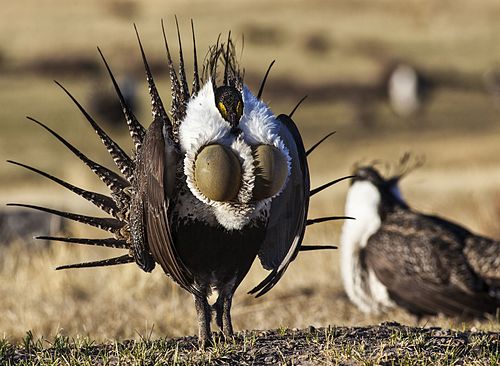History has hatched in Powell as a commercial operation succeeds in the first steps of giving greater sage grouse a much-needed boost throughout Wyoming.
Seven wild sage grouse eggs have hatched into seven captive chicks at Diamond Wings Upland Game Birds. According to the Powell Tribune, it’s the first time a commercial operation has successfully hatched sage grouse and the first time in the U.S.
Karl Bear, the manager of Diamond Wings, says their efforts have faced much scrutiny. But now, they have achieved a milestone that has eluded scientists and conservationists.
Diamond Wings Upland Game Birds established itself breeding hard-to-raise species like chukars, pheasants, and Hungarian partridges. They received permission to raise sage grouse from the Wyoming Game and Fish Department in January 2020.
The first year’s efforts were not successful. Thousands of dollars were spent on thermal imaging drones and other meticulous methods to locate grouse nests and eggs – to no success.
Now, the first seven eggs found and recovered have hatched. Bear has no formal education in bird rearing but has brought his decades of experience to the endeavor.
There are also several national and international groups lending their expertise to Bear and his colleagues:
- Scientists from Colorado
- The Sutton Avian Research Center in Oklahoma
- The Devonian Wildlife Conservation Centre at the Calgary Zoo in Canada
- The Meeteetse Conservation District
Calgary Zoo’s Devonian Wildlife Conservation Centre is the first organization to hatch and breed sage grouse in captivity successfully.
This successful captive hatching comes at a critical time for sage grouse conservation in Wyoming.
While the state has stepped up its efforts to preserve sage grouse, national numbers are declining.
A national study by the U.S. Geological Survey was published earlier this year. That study shows rates of decline have increased across the western portions of the sage-grouses’ historical range, especially true in the Great Basin.
The only place where populations stay stable is western Wyoming.
While the hatching is an immense achievement, the most daunting challenges for the team lie ahead.
“The hatching of eggs was no surprise,” says Angi Bruce, a deputy director with Wyoming Game and Fish. “Eggs hatch in an incubator pretty easily. I would say the most challenging part will be on the release of the birds and the concept behind the release — what they’re trying to achieve with the release — and then the success of that release. In our minds, that is going to be the biggest challenge.”
The chicks are currently in a special brooding room being fed a diet of insects and plant protein. They will eventually become the first broodstock at Diamond Wings, hopefully breeding and laying viable eggs in captivity.
But that’s still a long way off. Bear’s current priority is ensuring the chicks survive their first week – a critical landmark.










